
Overview of the Twentieth Century’s Development of Apparel Manufacturing
Within the [twentieth] century fashion has changed in everything but name. …Long-treasured traditions of hand craftsmanship, with their fashion out of reach of most people have in the main been superseded by large-scale manufacture primed with growing expertise and catering for all sections of the consumer market. …Fashion now pours off the production lines of innumerable substantial factories and is being reproduced with the technical know-how of a modern work force that numbers hundreds of thousands in nearly every leading Western country and far beyond (page 2).
Note: The italicized copy in this post is excerpted from the History of 20th Century Fashion. The book addresses the development of fashion styles and apparel manufacturing in England and in the USA. I’ve added blue highlighting to speed the reading and to emphasize important facts. The book’s writing is somewhat stilted, the reason I’ve edited various passages with inserts.
The Invention of the Sewing Machine

When in 1851 …Issac Merrit Singer successfully introduced his famous sewing machine… it seemed that a great break-through in clothing production would speedily result. …its effect was to be comparable to other major inventions… but it took an astonishingly long time for [the sewing machine’s invention] to make significant inroads into fashion-making and it was by no means either the simple, happy liberation from the previous toil and trouble of clothing production or the smooth contributions to progress that [one] might expect (page 50).
Seamstresses found the sewing machines fearsome new contraptions … [afraid] that this means of speeding up work would put them out of work. There was also the uncomfortable fact that [one] had to stand in order to operate the early treadle machines (page 49).
…at the start of … [1900] …millions of women, including a considerable proportion of middle class…had no means by which they could follow fashion without endless trouble…..The spread of fashion, and its availability, moved pace by pace with the emancipation of women …both moved slowly and laboriously (page 3).

Although …the sewing machine, which had become a practical reality in 1851, [it] had no significant effect on …craftsman’s methods …mass production was as remote as the moon …. [In 1864 Worth, an English designer who produced couture clothing in Paris] was employing over 1000 workers…. …at this time an industry only in size (page 13).
So important [were] the private dressmakers that ready-made meant something cheap and rather makeshift until after World War I…the description did not really come into repute fashion-wise till well after that (page 35).
Department Stores’ Role
During the late 1800s and in the beginning of the twentieth century [department stores slowly developed from small shops that sold fabrics] in the first half of the nineteenth century. From selling clothing materials, accessories and trimmings it was an obvious step, at a time when there was no organized method of fashion manufacture and no system of wholesale production, for the store to start …[making clothing for their customers] as well as selling dress lengths….
Most leading stores in Britain had set up their own workrooms for making …women’s fashions on a large scale during the later nineteenth century, doing very substantial business in high quality clothes which became second only to products of Paris or the Court dressmaker. In addition, they began to sell partially made clothes.…dresses [and skirts] that could be completed by …sewing up the back seam …left undone to accommodate the wearer’s measurements(pages 35- 36).
At the turn of the century (1900) A dressmaker [in England] did not do machine sewing. [Machine sewing] was used mainly for linings and was done by a machinist…
The first report on the women’s clothing industry in the USA appeared in the 1860 census…it covered hoops, skirts, cloaks and mantles. From then progress was rapid. …between 1860 and 1880 …annual production rose …from 2 …to 25 million dollars. [However] real growth did not take place until between 1890 and 1910 (page 38).
In the later part of 1900-1910 …department stores had…developed …large-scale…. …women shopped with enormous care …often a dress had to last for many years, and be handed down, with alterations, for a daughter (page 41).
Factory production
Early factory production of clothes …developed [in men’s wear.] Being more uniform and standardized…free from fashion’s quirks and changes, men’s clothing lent itself much more readily than women’s to factory production with its dominant benefits of bulk cutting, long runs, and mechanization.
The foundations of … future large-scale [clothing] manufacture …were laid in the early [1900s]. …an age-long craft …transformed into an industry not only by the sewing machine but also by the vast numbers of Jewish immigrants flocking into Britain and American from Central Europe as a result of …persecutions [driving] them from their homes. The Jews were the traditional tailors of Europe…. …their services came to be used by every section of the expanding clothing trade…. (page 51).
Sweat-shop labor – Development of the factory union
An 84-hour week for an average wage of between six and ten dollars a week was a commonplace… It was evident at this point that detailed investigation into conditions in the clothing trade were urgently [needed] (pages 52-53).
The International Ladies Garment Workers’ Union was launched in 1900. In 1909 20,000 workers in the New York clothing industry went on strike, among them …enough women and girls to make this the biggest strike of female labor ever know in the USA up to that time. … It was not until after World War I that the American women’s fashion industry reached …the model to the world…. (page 60).
Fashion’s Role in the Emancipation of Women
…with [retail stores] variety of ready-made clothes and accessories at reasonable price, [the retail stores] played an important part in the emancipation of women.
Improvement in Clothing Manufacture

The clothing industry’s wartime [World War I] responsibilities resulted in a substantial improvement in …the methods used in clothing manufacture. Service requirements meant that cutting had to be carried out in bulk. Mechanical cutters, power machines … had to be employed on a larger scale than ever before. [Manufacture was] broken up into a series of consecutive operations…so as to make the best use of limited skills. …Order was coming (pages 86-87).
[World War II’s] demand for quality rather than variety gave the [USA fashion] industry its chance to develop and become prosperous. …in 1947 sizing was still receiving great attention in America, which remained ahead of Britain….


The National Bureau of Standards in Washington was giving the world the lead in standardized sizing. …industrial production [was] taking over more and more from the custom-made sector…. Engineering techniques introduced into factory production. In America… there was a fanning-out of production …from the main center in Seventh Avenue [due to] shortage of labor. …The factories were located in areas where in other industries industrial engineering was the accepted practice, so it was taken for granted that this method should be used when labor was trained for fashion manufacture (pages 153 -154).
Home Sewing Patterns
…in 1862…Ebenezer Butterick, a tailor in Massachusetts, who had the idea of cutting out a pattern for his wife to follow as she busied herself with the family sewing. This led to a great demand for such patterns of all kinds. In 1866 Buttterick went to New York, bought a fashion journal there and started selling patterns by mail order – …believed for the first time anywhere. (page 26)
The home sewing industry has yet to adapt to modern sewing methods
As I trained in the industry I gradually moved over from home sewing methods to the sewing methods used by my sample makers. Their sewing methods were much easier, and the results far better than the home sewing methods I had been using. Now no one ever asks me, Did you make it?
Sometimes they do ask in disbelief, You didn’t make that, did you?
The vastly improved production methods used in industry can be easily used in the home with only minimal equipment. These vastly improved fitting and sewing methods are still not available to the general public, the reason I am writing my series of fashion technology books.
http://localhost/cfashion/
https://twitter.com/LaurelHoffmann1
https://www.facebook.com/CFashionEdu
https://www.linkedin.com/in/laurelhoffmann/
https://www.ravelry.com/projects/LaurelHoffmann
https://www.thumbtack.com/pa/philadelphia/drawing-lessons/fashion-drafting-sewing-books-classes
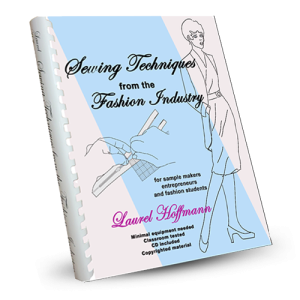
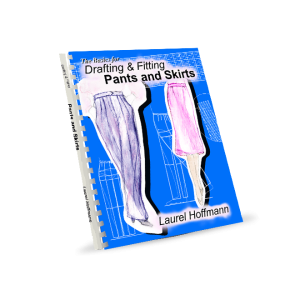
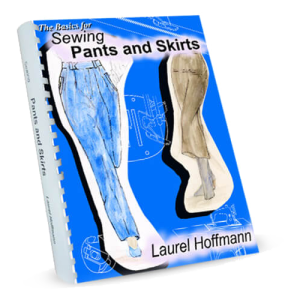
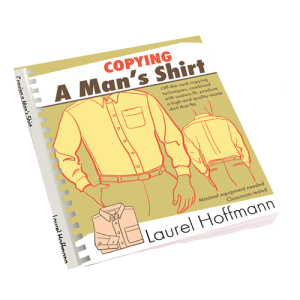


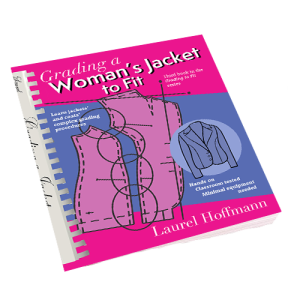
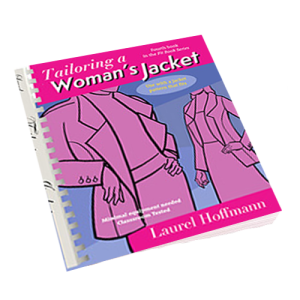
4 Comments. Leave new
As a self taught seamstress who has learned how to design and create my own clothing patterns and designs, I have struggled to let go of the tradition home sewing methods. I finally stopped using a 5/8 inch seam allowance since I know better how to use seam allowances to define the specific parts of the garment.
I do owe this to what I have learned using your books and information found in purchased information and on your blog. I really appreciate your personal assistance and help during these past few years as I have directed my sewing and design skills to be more like what the industry does. You are always spot on and you know your stuff. I am grateful for all your insight and motivation. Jnetti
Thank you.
This is a great article. I look forward to reading your other articles. I’ve sewn clothing all my life but hated it. I sew quilts and fiber art but you are motivating me to look into this again.
Great, Trish! You are a quilter, which means you are already using industrial sewing procedures. When I entered the industry I was an accomplished home sewer, but I was never really happy with my results. In the industry I slowly moved over to the industry’s sewing methods, and found them to be much better. I now use nothing else. All is precision, accurate measuring, planning, organizing. Sound familiar? It’s three dimensional quilting techniques.
Unfortunately most of these procedures have never been made available to the mass market, primarily because industry is line-assembly. Most in the industry know their jobs, but not the jobs of anyone else, even those sitting next to them. One would not only have to understand the entire system, one would also need the time and financial support to write it down. So far – 30 years and counting.
Keep reading. I have a lot of posts and plan to write many more. My son and I are now making videos, which are being televised locally here in Philadelphia, and are also up on YouTube. Google “You Tube – Laurel Hoffmann”
Thanks for your comment. Laurel